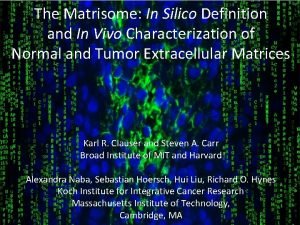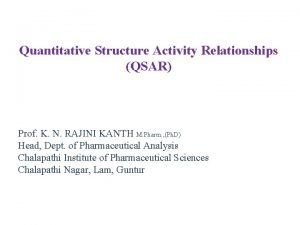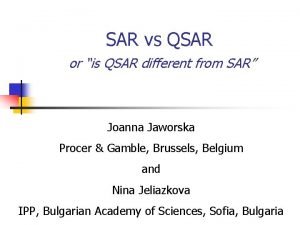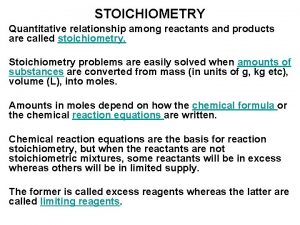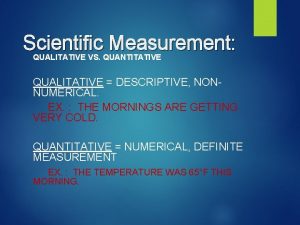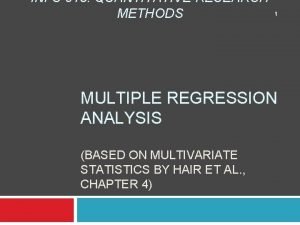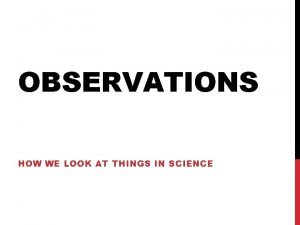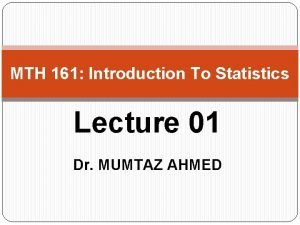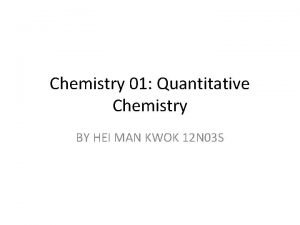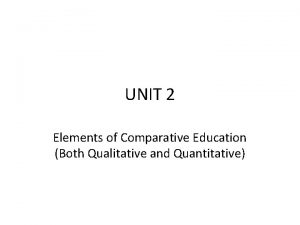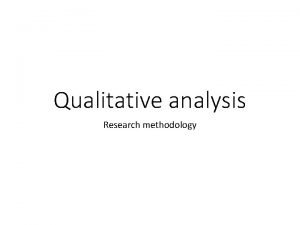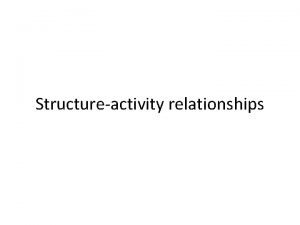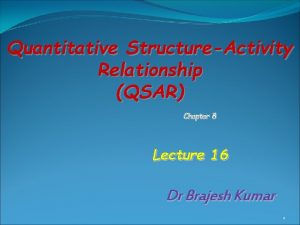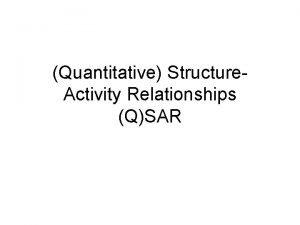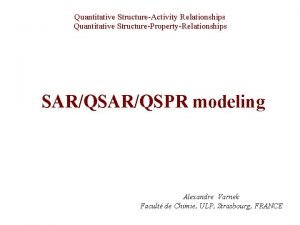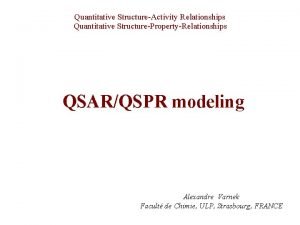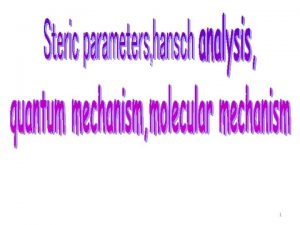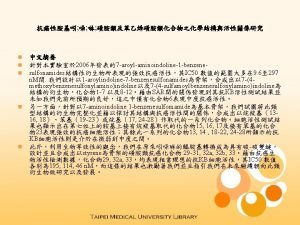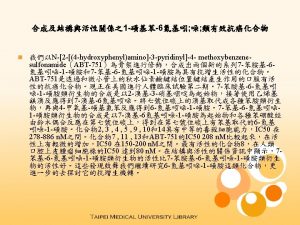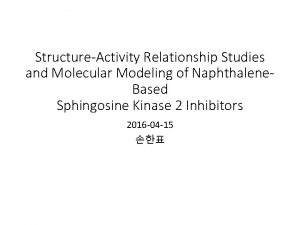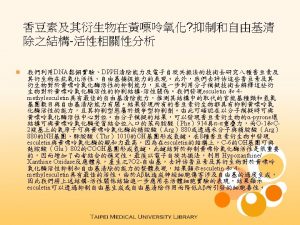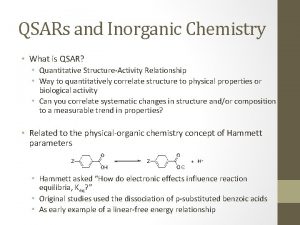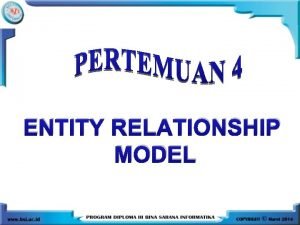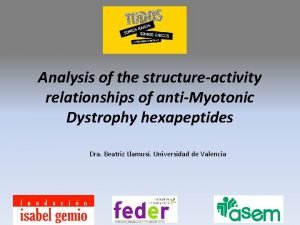in silico 3 D QSAR Quantitative StructureActivity Relationship

























- Slides: 25















Конструирование ФАВ in silico Если 3 D-структура мишени неизвестна: Данные: структура гомологов мишени Метод: моделирование структуры мишени по гомологии Данные: структура уже известных лигандов Метод: QSAR (Quantitative Structure-Activity Relationship) «Структура определяет свойства» : QSAR represents an attempt to correlate structural or property descriptors of compounds with activities. These physicochemical descriptors, which include parameters to account for


Конструирование ФАВ in silico Если 3 D-структура мишени известна: Данные: структура мишени и лиганда Метод: молекулярный докинг, молекулярная динамика Трудности докинга: “Traditional” atom-atom scoring functions (knowledge-based or empirical): not accurate enough More adequate physical models (e. g. , Quantum Mechanical Polarizable Force Field ): too complicated for direct computation Трудности ММ: очень медленно

Конструирование ФАВ in silico Если 3 D-структура мишени известна: § Search for binding site in known protein 3 D structure § De novo ligand construction from a chemical space § Ligand self-docking: positioning of a known ligand in a binding site of a protein § Virtual screening of a set of known ligands against a target protein binding site § Ligand optimization: search for replacement for a certain chemical group of

Ligand virtual screening: performance evaluation on the HSV -1 thymidine kinase Target: 990 drug-like molecules + 10 real inhibitors screened vs. HSV-1 thymidine kinase (PDB ID 1 kim) Performance evaluation: A number of real inhibitors in a certain top fraction of the energy scores SURFLEX software: 8 true hits in top-50 [Bissantz et al. , J Med Chem 2000; 43: 47594767]

Ligand optimization: problem definition Given (1) known ligand, (2) its position in the binding site (known from X-ray or docking), (3) ligand “side group” (fragment) to be replaced, Find a small number (~10 -100) of replacing side groups aimed at the improvement of (a) binding affinity, or (b) synthesizeability, (c) solubility, (d) side effects, etc. , depending on the type of the optimized feature

Ligand optimization: example Human protein-tyrosine phosphatase 1 B (PTP-1 B) Phenyl IC 50 = 132 M PDB: 2 bge, T 2 D IC 50 = 1608 M Methyl Methoxy IC 50 = 203 M IC 50 = 138 M




 Matrisome
Matrisome Qsar notes
Qsar notes Qsar toolbox 매뉴얼
Qsar toolbox 매뉴얼 Sar qsar
Sar qsar In hansch equation π stands for
In hansch equation π stands for Qsar
Qsar Oecd qsar toolbox
Oecd qsar toolbox Log 1/c qsar
Log 1/c qsar Qsar
Qsar The quantitative relationship of chemical combination
The quantitative relationship of chemical combination Customer relationship mangement
Customer relationship mangement Integrating qualitative and quantitative methods
Integrating qualitative and quantitative methods Qualitative force diagrams
Qualitative force diagrams Chapter 3 exploring quantitative data answers
Chapter 3 exploring quantitative data answers T test quantitative data
T test quantitative data Si unit in science
Si unit in science Multiple regression research design
Multiple regression research design Quantitative observation
Quantitative observation A qualitative variable
A qualitative variable Quantitative chemistry
Quantitative chemistry Quantitative demand analysis
Quantitative demand analysis Comparative education
Comparative education Slidetodoc.com
Slidetodoc.com The behavioral management viewpoint emphasized
The behavioral management viewpoint emphasized Qualitative and quantitative data difference
Qualitative and quantitative data difference Qualitative research purpose statement
Qualitative research purpose statement
